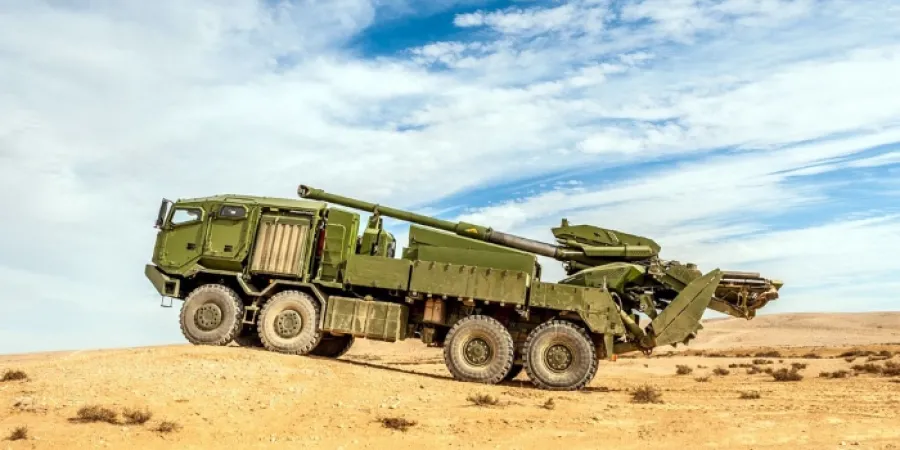Elbit's mobile howitzer selected by US Army for Shoot-off Evaluation
As part of the process of selecting a production-ready system for Stryker Brigade Combat Teams, the Army is to test the ATMOS Iron Sabre's range, rate of fire, and mobility
Eyal Boguslavsky
| 21/12/2020
Elbit Systems of America announced last weekend that its Autonomous Truck Mounted Ordnance System (ATMOS), the Iron Sabre, was selected to participate in the United States Army’s 155mm Mobile Howitzer Shoot-Off Evaluation. The event, which will occur during the first quarter of 2021, provides the Army an opportunity to review various solutions from industry and then select a production-ready system that demonstrates increases in range, rate of fire, and mobility over current artillery systems available to Stryker Brigade Combat Teams (SBCTs).
In its statement, Elbit Systems of America described itself as a market leader in providing artillery solutions and said it is confident its system will perform well at the shoot-off, being evaluated as "ready now." The ATMOS Iron Sabre is a proven, fielded system from a family of howitzers that have supported international customers for more than 30 years. Compatible with all existing US projectiles and propellant charges, it fulfills the Army’s mobile howitzer needs immediately, delivering on the modernization and capability improvements defined by Army Futures Command Long Range Precision Fires objective, the company said.
"US Army Fires needs solutions that can keep up with the SBCT, can shoot faster and farther, and most importantly are low risk and ready now. Elbit Systems of America’s ATMOS Iron Sabre addresses all of these needs," said Ridge Sower, Vice President of Ground Combat & Precision targeting at the company. "We are pleased to be selected for this evaluation and stand ready for rapid delivery from our hot production line if selected for production and fielding."
As part of the process of selecting a production-ready system for Stryker Brigade Combat Teams, the Army is to test the ATMOS Iron Sabre's range, rate of fire, and mobility
Elbit Systems of America announced last weekend that its Autonomous Truck Mounted Ordnance System (ATMOS), the Iron Sabre, was selected to participate in the United States Army’s 155mm Mobile Howitzer Shoot-Off Evaluation. The event, which will occur during the first quarter of 2021, provides the Army an opportunity to review various solutions from industry and then select a production-ready system that demonstrates increases in range, rate of fire, and mobility over current artillery systems available to Stryker Brigade Combat Teams (SBCTs).
In its statement, Elbit Systems of America described itself as a market leader in providing artillery solutions and said it is confident its system will perform well at the shoot-off, being evaluated as "ready now." The ATMOS Iron Sabre is a proven, fielded system from a family of howitzers that have supported international customers for more than 30 years. Compatible with all existing US projectiles and propellant charges, it fulfills the Army’s mobile howitzer needs immediately, delivering on the modernization and capability improvements defined by Army Futures Command Long Range Precision Fires objective, the company said.
"US Army Fires needs solutions that can keep up with the SBCT, can shoot faster and farther, and most importantly are low risk and ready now. Elbit Systems of America’s ATMOS Iron Sabre addresses all of these needs," said Ridge Sower, Vice President of Ground Combat & Precision targeting at the company. "We are pleased to be selected for this evaluation and stand ready for rapid delivery from our hot production line if selected for production and fielding."



